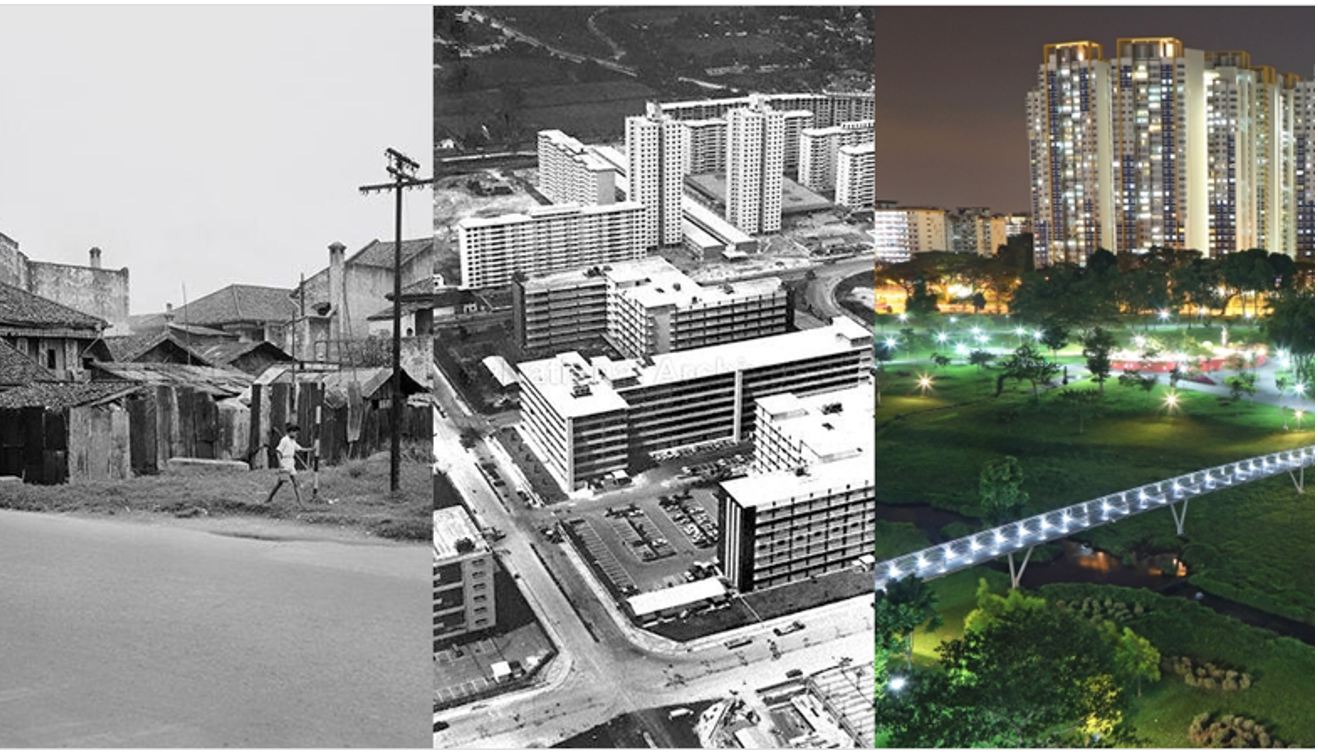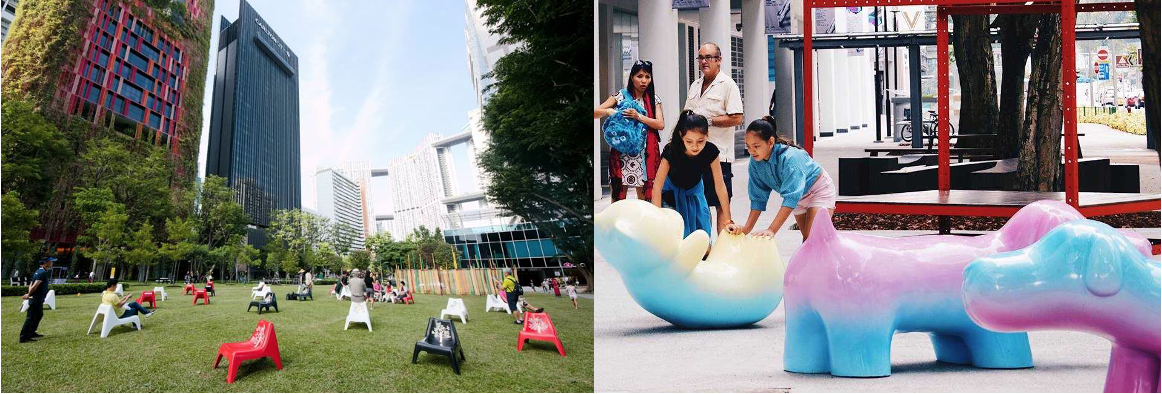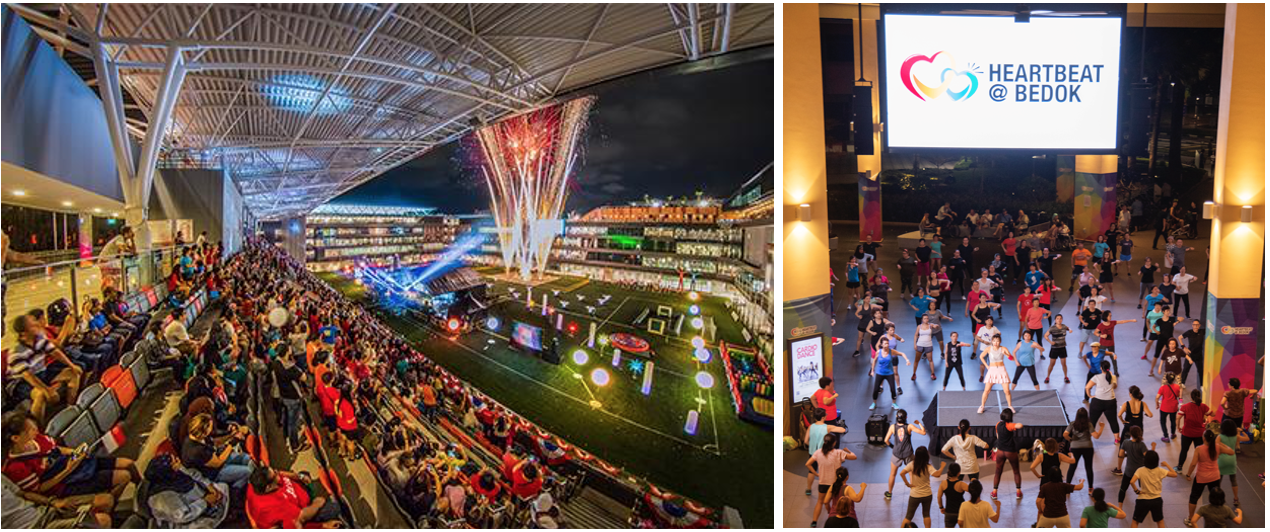Placemaking
Placemaking

 Images: Slum at Syed Alwi Road / NAS; Kallang Basin after Reclamation / NAS; Bishan-Ang Mo Kio Park / NParks
Images: Slum at Syed Alwi Road / NAS; Kallang Basin after Reclamation / NAS; Bishan-Ang Mo Kio Park / NParks
Within three decades of independence, the government had successfully addressed the basic needs of housing and jobs. As a result, urban development plans and priorities shifted at the start of the 1990s to improving the quality of life of residents. This is especially important in high-density cities where private space is limited.

Placemaking – creating meaningful spaces where people live, work and play – has thus become key to how Singapore shapes its public spaces in recent years. It was a key theme of URA’s 2019 Master Plan.
 Image: Jurong Lake Gardens / HDB
Image: Jurong Lake Gardens / HDB
A well-designed public space encourages people to come together, interact and foster connections to the area. This ensures that precincts across Singapore will always remain relevant as shared spaces for gathering and activities.
 Images: Tras Link Park and Bencoolen Benches / © Urban Redevelopment Authority. All rights reserved. Permission from URA required for use of image.
Images: Tras Link Park and Bencoolen Benches / © Urban Redevelopment Authority. All rights reserved. Permission from URA required for use of image.
The community has been involved in these placemaking projects. The Lively Places Programme – a joint initiative by HDB and URA – is one example. It supports community-led efforts, organising activities such as art classes in neighbourhoods and allowing installations like murals to be put up. This has helped residents form close bonds with the areas they live in.
 Images: Lively Places Programme / HDB
Images: Lively Places Programme / HDB
There are many examples of how Singapore has sought to make public spaces unique for Singaporeans.
One example is the URA’s Business Improvement District (BID) programme. The BID has increased the allure of 10 precincts across Singapore, including City Hall, Singapore River, Jurong Gateway, and Paya Lebarthrough targeted marketing and events. The private sector independently takes charges of the programme, which provides stakeholders in the area, such as local businesses and communities, with a sense of ownership.
The Singapore River One programme is another example, with the waterfront bolstered by events such as the Singapore River Festival. Street benches and playgrounds have also been installed to encourage recreational activities there.
 Image: Somerset Belt Masterplan / NYC and MCCY
Image: Somerset Belt Masterplan / NYC and MCCY
Another is the Somerset Belt Masterplan, which has involved young Singaporeans in transforming the Somerset area into a vibrant youth precinct. To date, almost 10,000 youths have participated to co-create this space alongside the Government. For example, they have conceptualised a ‘Dual Spine Experience’. This divides the Somerset area into two zones: an Active spine reflecting dynamic street life features such as graffiti art and a Quiet spine with cosy spaces providing an escape from the city bustle.
 Images: Our Tampines Hub and Heartbeat@Bedok / PA
Images: Our Tampines Hub and Heartbeat@Bedok / PA
The public housing heartlands is also another example of how public spaces can help create bonds through community hubs, which include facilities such as libraries, gyms, and polyclinics under one roof, integrated community hubs such as Tampines Hub and Heartbeat@Bedok have provided a common area for residents to bond and enjoy diverse activities together, and make more effective use of land.

